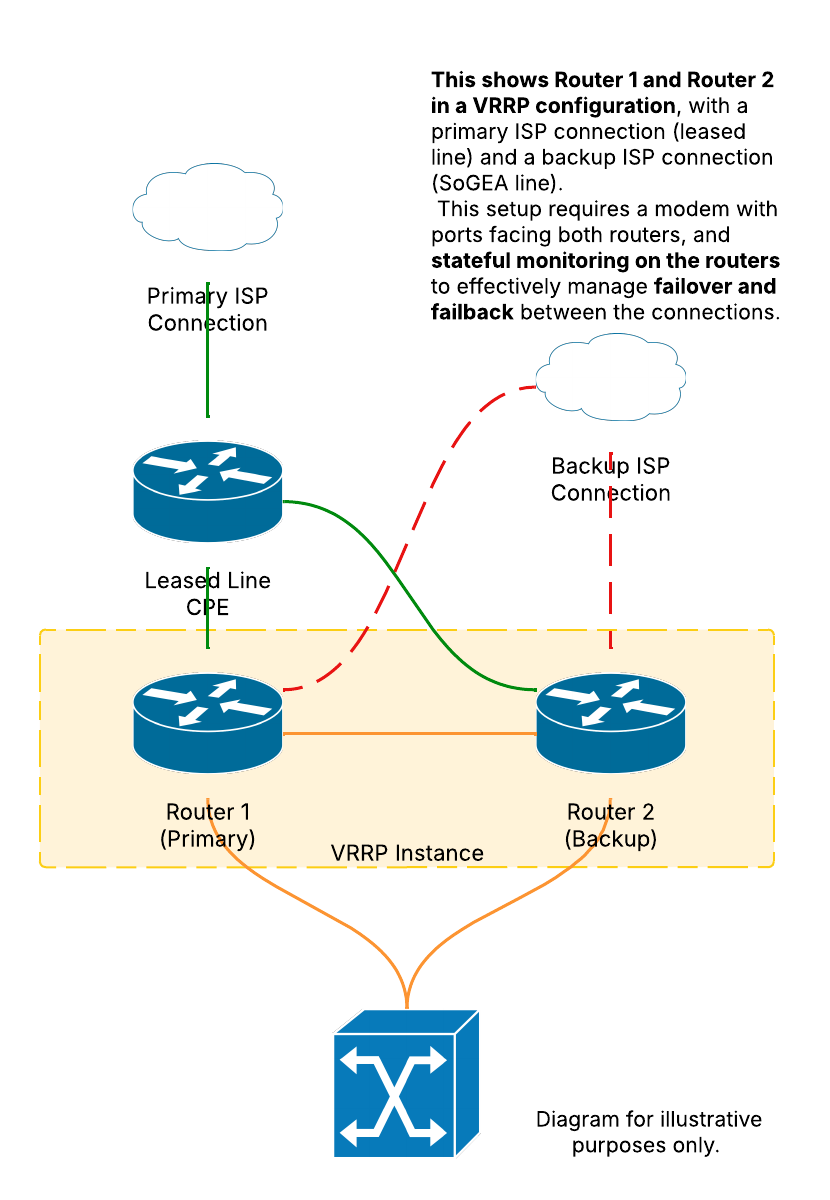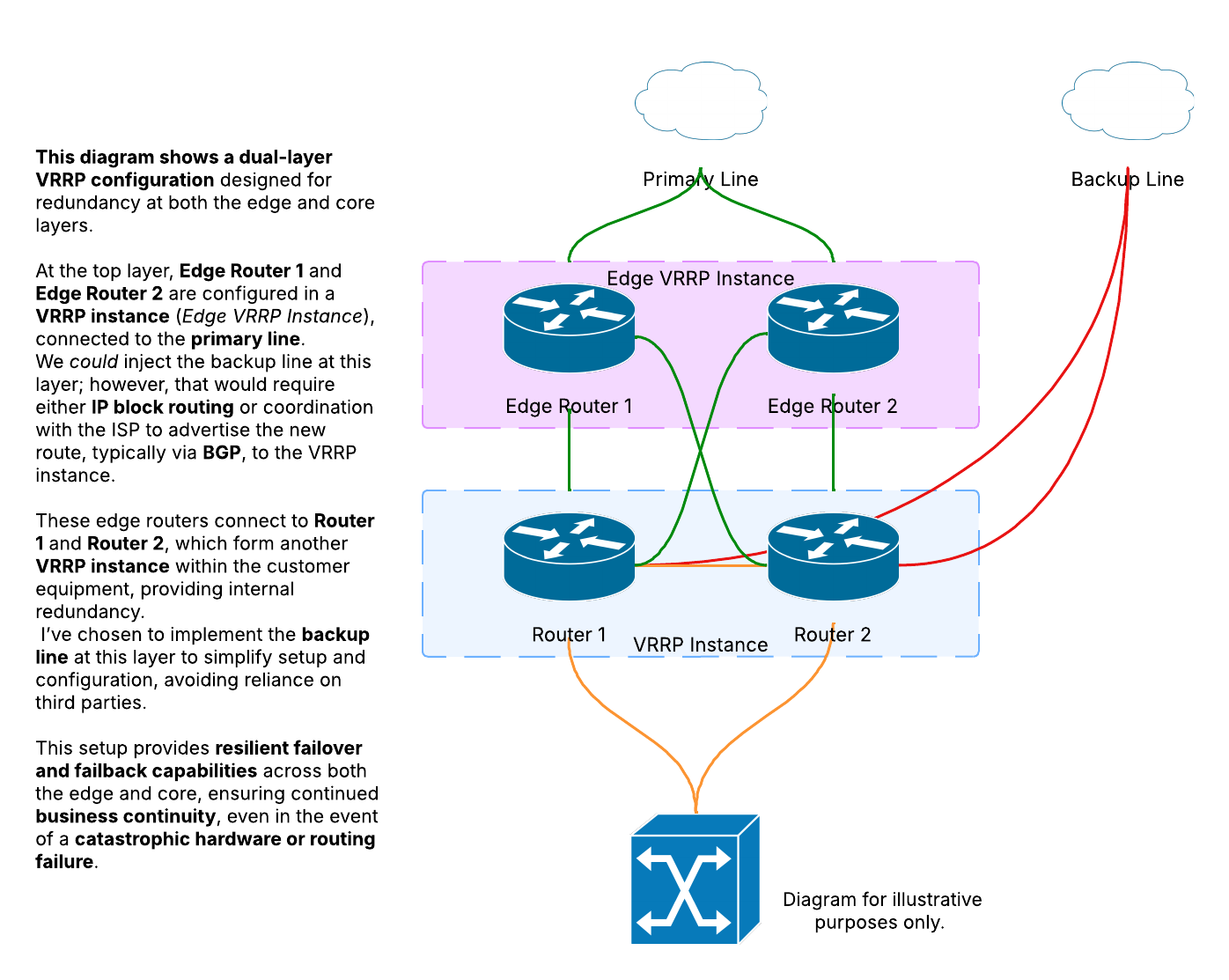Edge Redundancy
Something easily overlooked when migrating from on-prem to cloud-based resources is network redundancy. What happens if a router fails? An edge switch goes down? Or worst—the business loses its entire internet connection?
As organisations shift from traditional on-prem equipment to hosted services such as a cloud PBX, hosted servers, private clouds, cloud repositories, SaaS, and IaaS services, it’s easy to lose sight of where the weak link may lie. When mapped out logically, it's easy to spot. It often sits at the edge of the network: a single router or a lone internet connection.

So how do we mitigate the risk to business operations and continuity?
We introduce redundancy—but what does this mean and what does it look like in the real world?
Let’s start at the edge and work our way in.
The internet is what keeps us connected and business operating. Fortunately, in the UK we have a plethora of services we can use to build redundancy. Leased lines, SoGEA, 4G/5G, and Satellite are among the most popular and widely available, with satellite growing in popularity over the last few years.
So how do we combine them? Best practice is to order two products from different suppliers, not always the easiest task, with many providers reselling the same product. How I like to pair connections depends on the business needs, budget, and location.
Leased Line (Uncontested & Sequential) + SoGEA
A leased line provides guaranteed speeds and SLA’s, meaning a consistently positive user experience. I often pair this with a SoGEA backup line used as failover. Although the speeds are reduced when running on the SoGEA line, the key point is that the business stays online and operational, even when the primary line goes down.

SoGEA + 4G/5G or Satellite
The SoGEA line is the primary internet connection for the business, typically offering a varying range of upload and download speeds. To provide redundancy, I like to incorporate some form of wireless breakout, such as 4G/5G or Satellite.
Using a different supplier and network type almost guarantees physical separation. So if there is an issue with the SoGEA line, the wireless connection takes over. In some cases, the speed is even faster than the primary line—though latency can be a drawback. Still, the key point remains: the business stays online and operational.
Edge Hardware Redundancy
While we have covered internet redundancy, let's address the elephant in the room: What provides us with our internet connection? The router.
Most SMB environments run perfectly fine with a single router. But what happens when that device fails?
· How long to get a replacement, can you even get a replacement?
· How long to configure and bring core services back online?
· How long until non-critical services are restored?
Often, these questions are only asked once the equipment has already failed.
We can plan for this. By implementing first-hop redundancy protocols such as VRRP or HSRP, we can ensure that if one router fails, the other takes over almost seamlessly. It does exactly what it says on the tin.
This setup means that the business experiences minimal disruption. Technicians can arrive on-site, diagnose and resolve the issues, while the business continues to function.

Edge redundancy is something that is often overlooked or missed, until something fails, then it is too late. It could be an internet line, a router or the path itself. By effectively communicating with the business we can design and plan for redundancy at the edge. Using diverse internet connections and implementing redundant router protocols businesses can protect themselves from unexpected downtime and maintain operational continuity.
I like to look at it as an insurance policy you only see the value in it when you need it.
The goal isn’t perfection. It’s resilience. Starting at the edge and building inwards.
